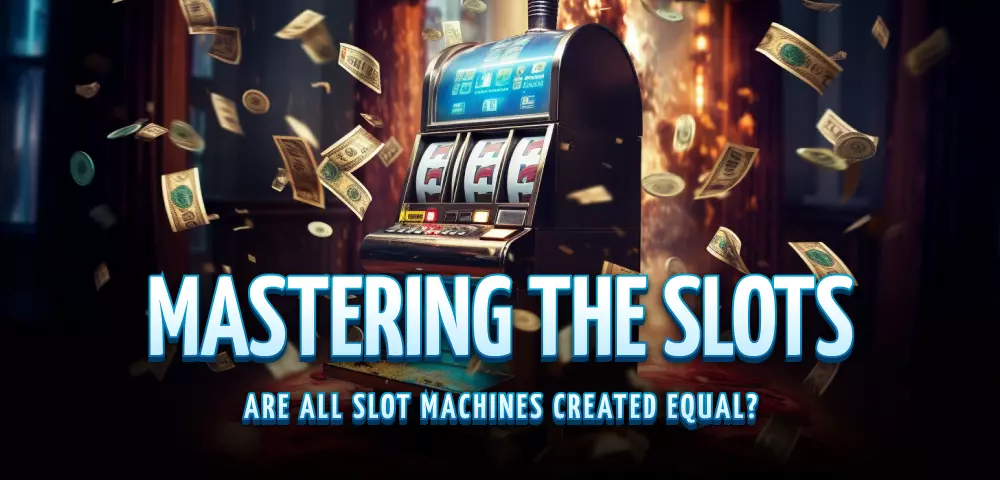Mastering the Slots: Are All Slot Machines Created Equal?
Slot machines are not all created equal. There are many different kinds of slots these days, especially online. They differ in terms of cost, odds, paylines, features, return-to-player percentage, and even design. While the parts are common in all slots, the details are what make a machine more or less profitable, engaging, fair, and so on. The most important thing to pay attention to is where you play slots. If you use a safe online casino Czech Republic, you can expect only approved and safe slots with random outcomes and great features.
Before you jump into the world of gambling, let us tell you a bit more about these games. Knowing how they work can help you pick the best out of thousands of available machines.
Understanding Slot Machines

In a slot machine, your job is to select a bet and spin the reel. When you do the latter, the game will select a random series of numbers that determine the symbols to land on your screen. Depending on what lands on the screen, combinations are made. Your payout depends on the symbols and the machine paytable.
Simply put, if you hit a winning combination, there will be a payout.
Today’s slots are very different from the early machines. The first slots were mechanical and used gears and levers to work. When a person inserts a coin, the brake would unlock and they can start pulling the handle or the lever.
Physical slot machines had a metal shaft in the center to support the reels. The break would stop the reels, while sensors were used to share the reel positions to the payout systems.
A lot has changed since these old machines.
Today, we have video slots. Their design solely resembles that of old machines, but everything else is different. Inside, the video slots use a random number generator program that determines the outcome of every spin. There’s no lever – you just click a button or click on your phone’s screen, and the reels start turning.
While old machines had a maximum of 20 symbols, this technology now allows up to 256 per reel.
A Peek Inside the Slot Machine
To better understand the mechanisms and the odds, you need to learn a bit about the main parts of a slot machine. These include:
- Reels. Reels are the vertical positions on the game’s grid, spin when you click the button
- Play button. This is what you use to set the bet and start spinning the reels
- Symbols. Every character or picture on the reels is a symbol
- Paylines. Paylines mark every possible winning combination on the reels. An average machine has around 25-50 paylines, but some have hundreds of them
- Paytable. The paytable shows the rules, features, and paylines of the game
- Random number generator. This is the software that chooses the symbols to appear on the reels
Random Number Generators: How They Influence the Outcome
The Random number generator or the RNG is a complex program that creates random symbols that are independent of the spins before them. Basically, this technology was created to make every slot random. In this sense, all slots are created equal. However, if you consider their paylines and odds, they can differ greatly.
The RNG generates numbers in a sequence that’s hard to predict. The goal is to create sequences in which it’s impossible to find out what the next number will be. An RNG will generate numbers every 50 milliseconds, making slots random and fair.
Slot Machines Odds and Payouts
The odds of any slot machines are built into it. These are built into a program that’s installed on a computer chip. That chip can be found inside the slot machine. With online slots, the program is installed in the video game.
This program is created to set a payback percentage i.e. the amount of money that is paid to players. This is an average number, a calculation that makes sure the house has an edge and doesn’t lose more than it gains.
In most gambling jurisdictions, the law requires to have a payback percentage that’s not lower than a specified percentage (in most cases 75%). That being said, a slot can have any percentage over this number. For instance, their return-to-player can be 80% or 99%.
Players generally look for slots with higher RTPs. The higher this number, the higher the return to the player. For example, if you deposit $100 on a slot with 99% RTP, the average return would be $99.
This is not written in stone – it’s an average percentage that tells us how likely players are to win in a slot machine.
Keep in mind that casinos must have a profit, too. This is why they have what we call a house edge. The house edge makes sure that the casino gets a gain from all wagers and doesn’t suffer losses. The house edge is a statistical advantage of the casino over the player.
A game with a smaller house edge has a higher RTP since the casino is guaranteed a smaller profit on it.
Which Slots Should You Play?
The RTP percentage and house edge of a slot machine can tell you how much you can expect (on average) back on your deposits. However, some players don’t prefer the games with the highest RTP and play those with lower RTP instead.
It’s not all about this percentage.
It’s also about the game’s features. If a game is a jackpot slot, for instance, it can have a lower RTP but be the player’s favorite. This game would offer them a chance at a life-altering jackpot, something that the high RTP slot might not have.
Also, games with higher RTP offer frequent, but usually smaller payouts. A game with a lower percentage can offer fewer payouts, but they will be higher in value.
In the end, it all comes down to what you prefer.























